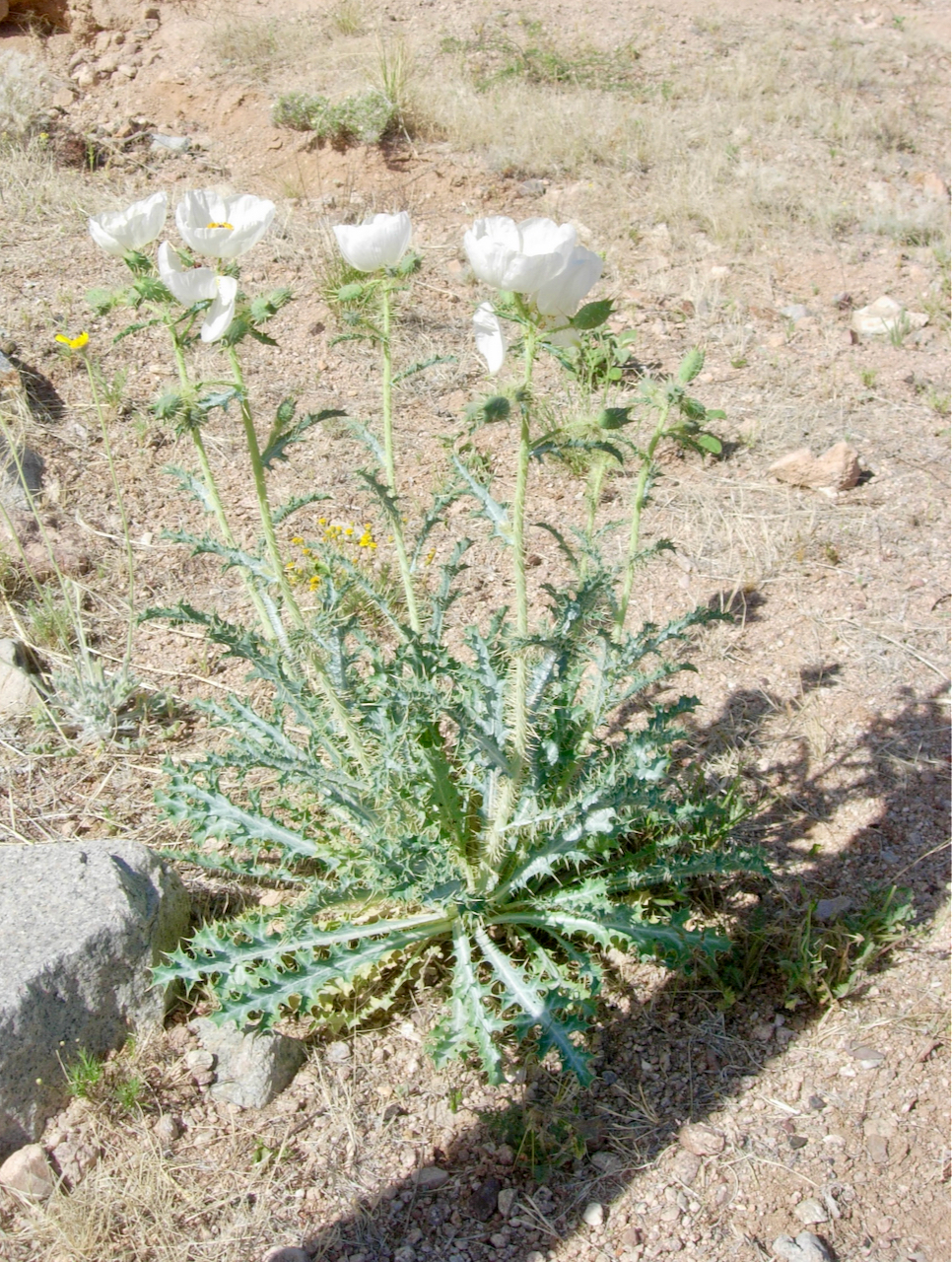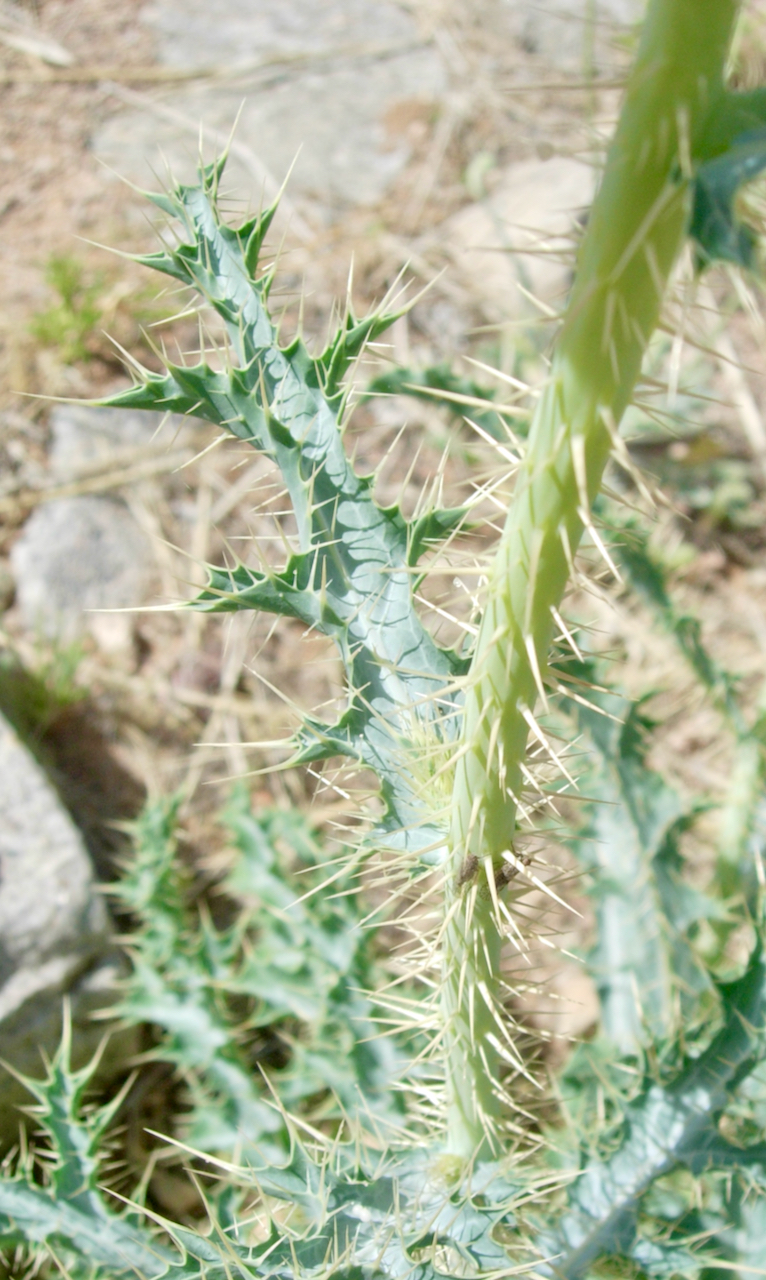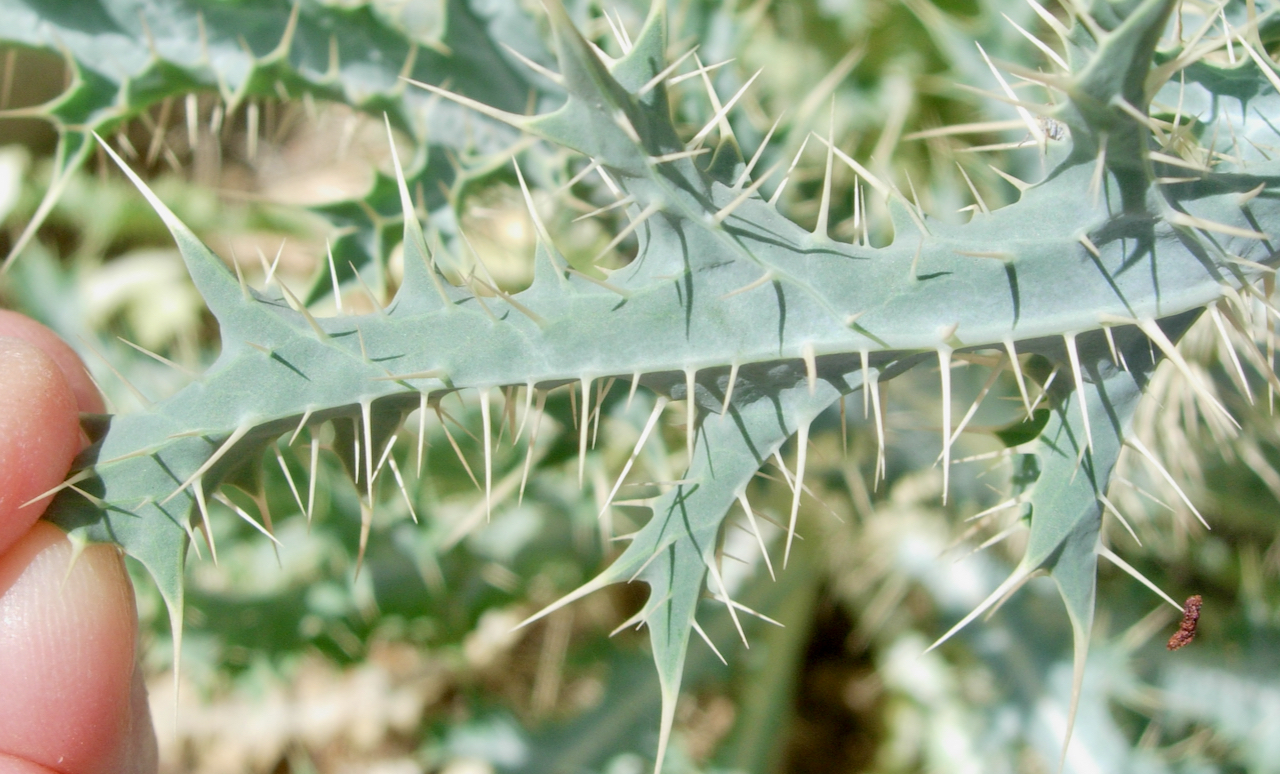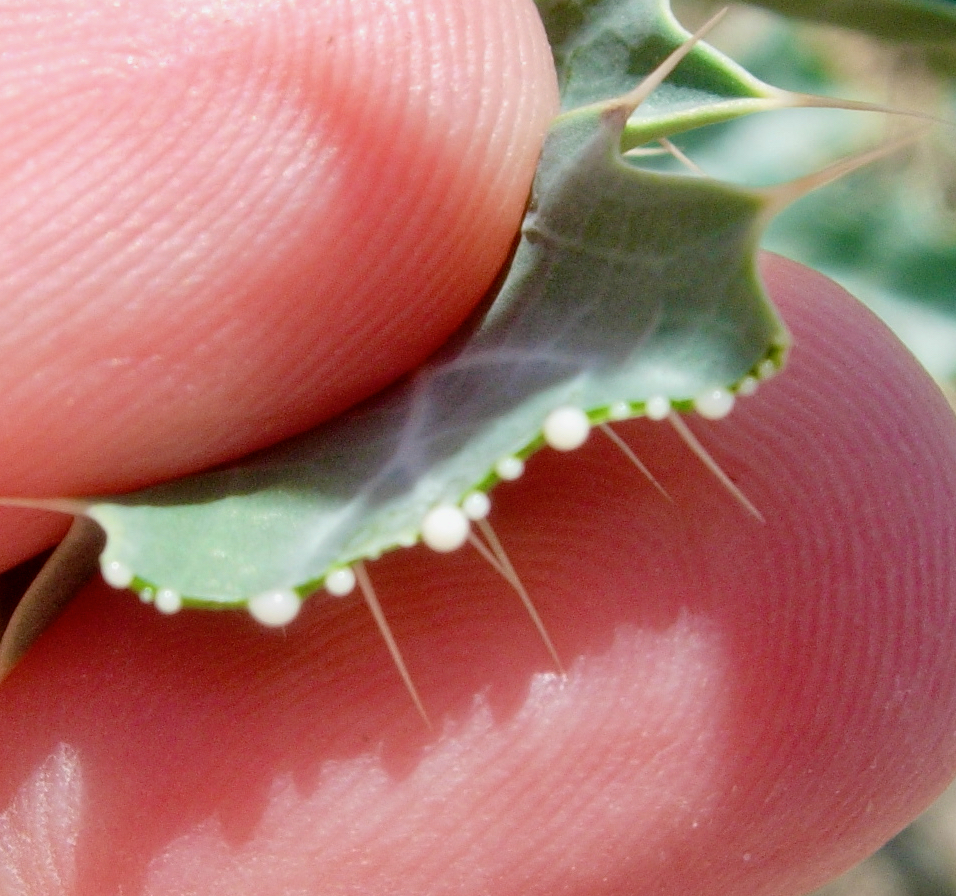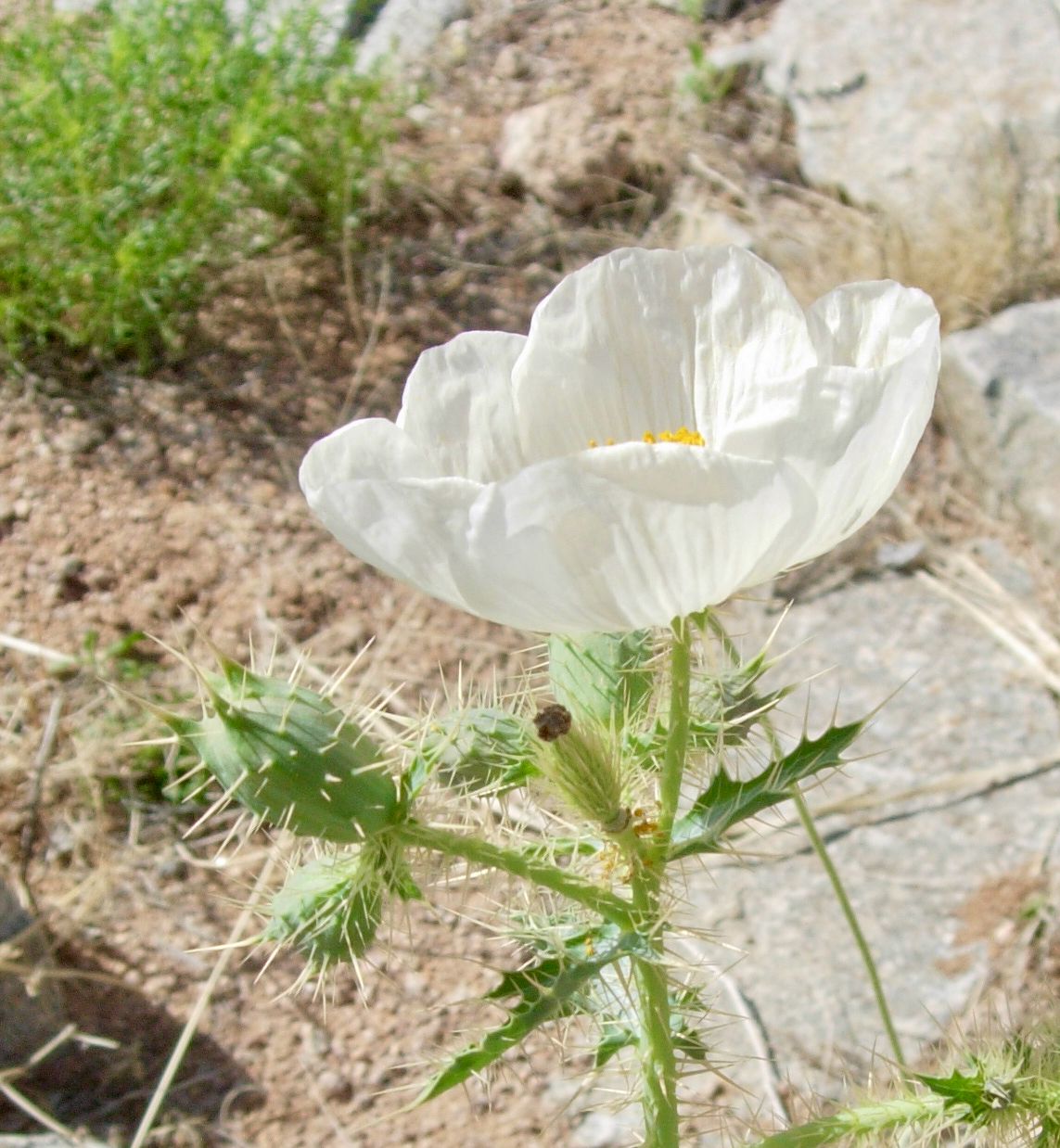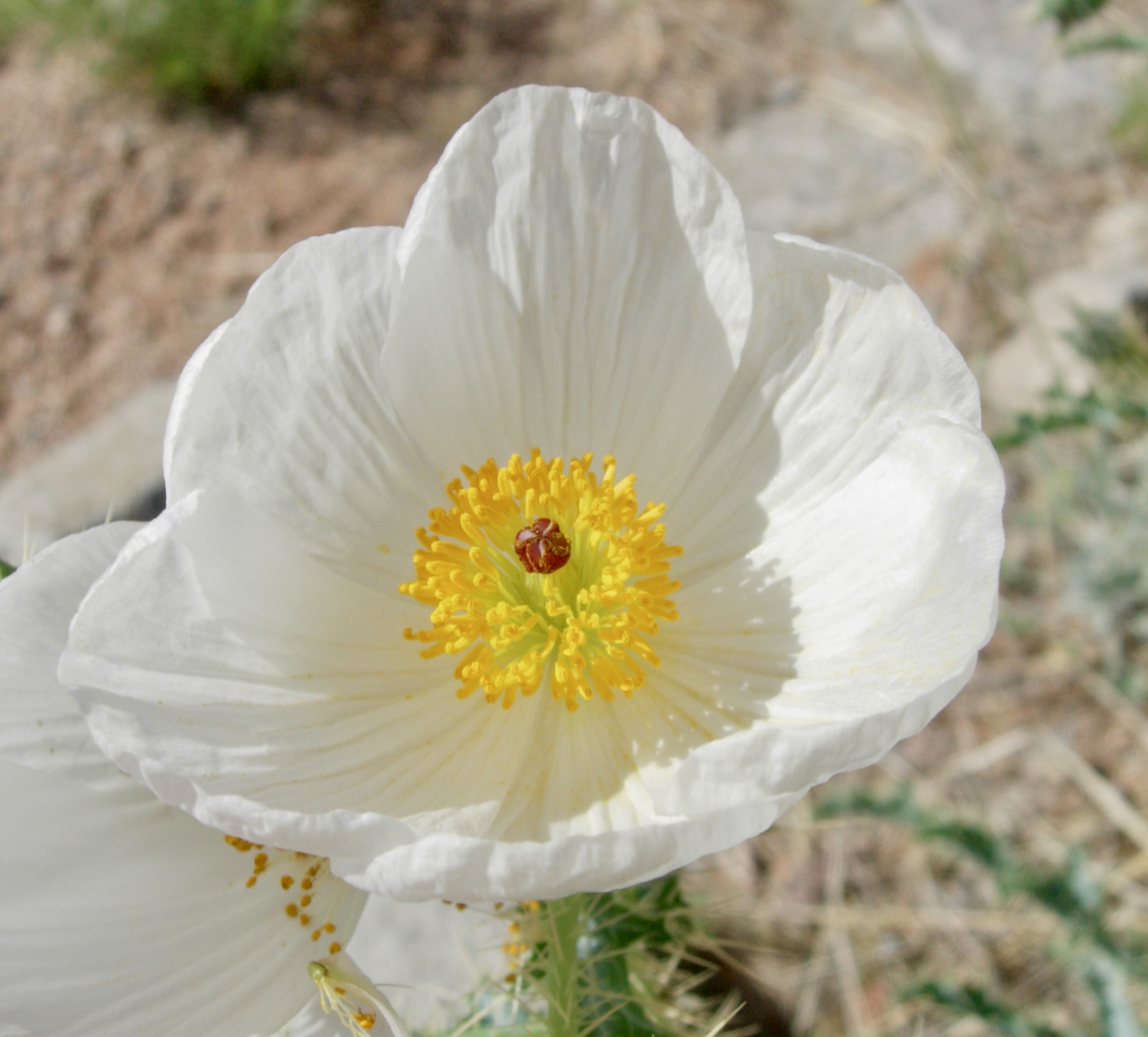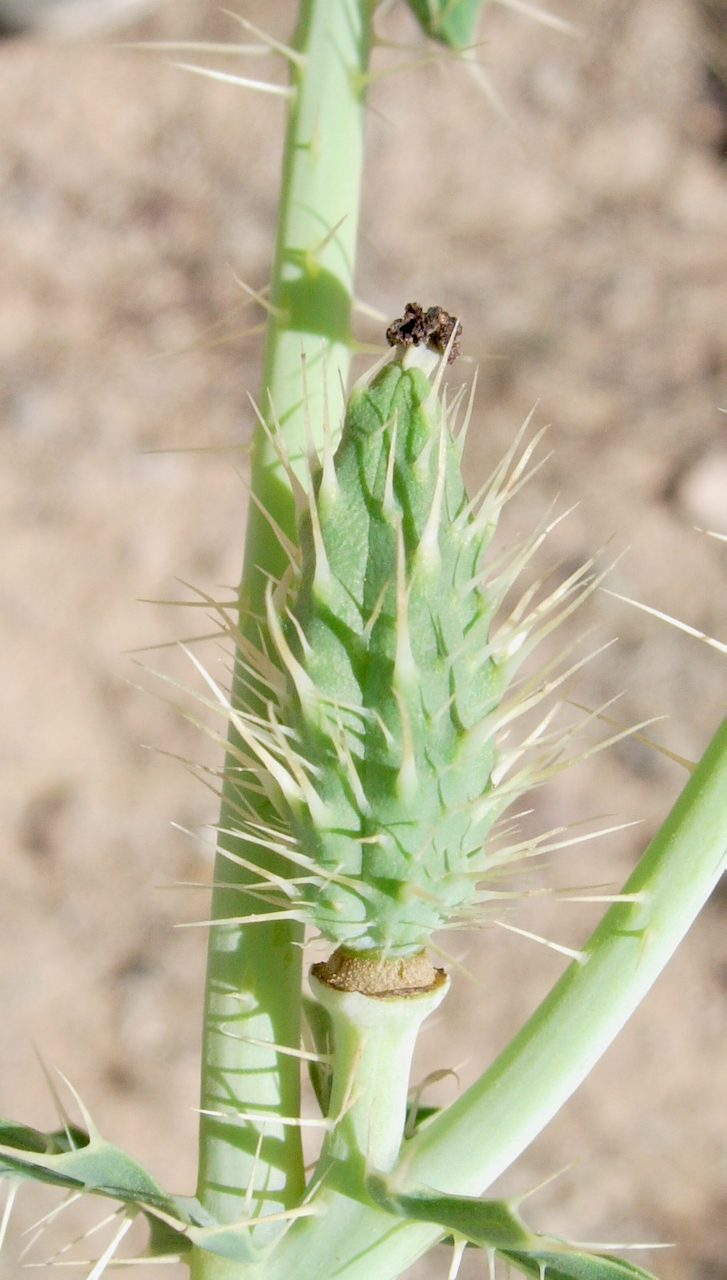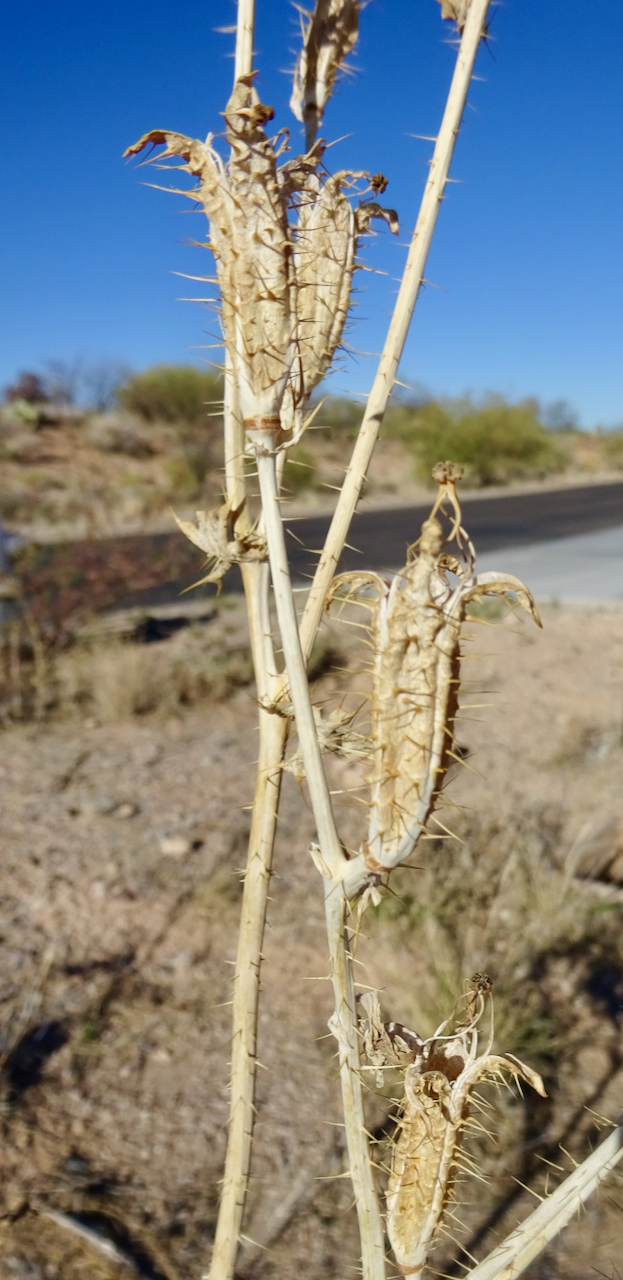Sonoran Prickly Poppy
Argemone gracilenta
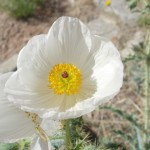
About the Plant
Sonoran prickly poppy is a spring-blooming perennial native to southern Arizona and adjacent Mexico. Its large white flowers are showy, held 2-3 feet in the air. The entire plant is prickly and should be handled with care.
Sonoran prickly poppy grows in open spaces and washes. If you have it growing on your property, appreciate it, as seeds and plants are most probably not available commercially. It will survive on natural rainfall.
CAUTION: all parts of the plant are poisonous.
Wildlife value: bees and other pollinators are attracted to the flowers. Mourning doves may eat the seeds.
More Information
Weekly Plant on Sonoran prickly poppy
Technical botanical description from SEINet
ID Characteristics
This plant is in the Papaveraceae - the poppy family.
Sonoran prickly poppy grows to 2-3 feet. Older plants will have several stems. Last year's dead stems may remain on the plant. The stems and leaves are covered with sharp prickles, each about half an inch long.
Sonoran prickly poppy first produces a clump of basal leaves, then several stems topped by flowers. Basal leaves can be up to 8 inches long. Leaves on the stem are alternate, gradually becoming shorter toward the top of the stem. Each leaf is lobed and the edges of each lobe end in prickles. There are prickles on the upper surface of the leaf and often on the mid-vein of the lower leaf surface (second photo). The leaves are sessile, that is, there is no leaf stalk.
One of the ways to distinguish this prickly poppy from others in the area is the color of the sap. Break off a small piece of a leaf - be careful of those prickles! If the sap is white, the plant is Sonoran prickly poppy. If the sap is yellow, the plant may be southwest prickly poppy (Argemone pleiacantha).
The flowers of Sonoran prickly poppy are terminal. The stem branches toward the top of the plant, one flower at the end of each branch. New stems may grow from the base of the upper leaves, each ending in flowers. The three sepals (the covering of the flower bud) are prickly and each ends in a hollow horn topped by a prickle. The flower bud is over a half inch long. As the flower opens, these sepals will drop away. There are small leaves called bracts under the flower buds. In the photo above you can see buds to the left and a young fruit just below the flower.
The open flower is about 3 inches wide and has 6 white petals, in two whorls of three. There are over 100 yellow stamens with yellow anthers. The stigma is red.
The fruit is initially green and is covered with prickles. The stigma dries but remains on the top of the fruit.
When mature, the fruit opens at the top to release seeds. The fruit turns brown and can stay on the plant for several months.
